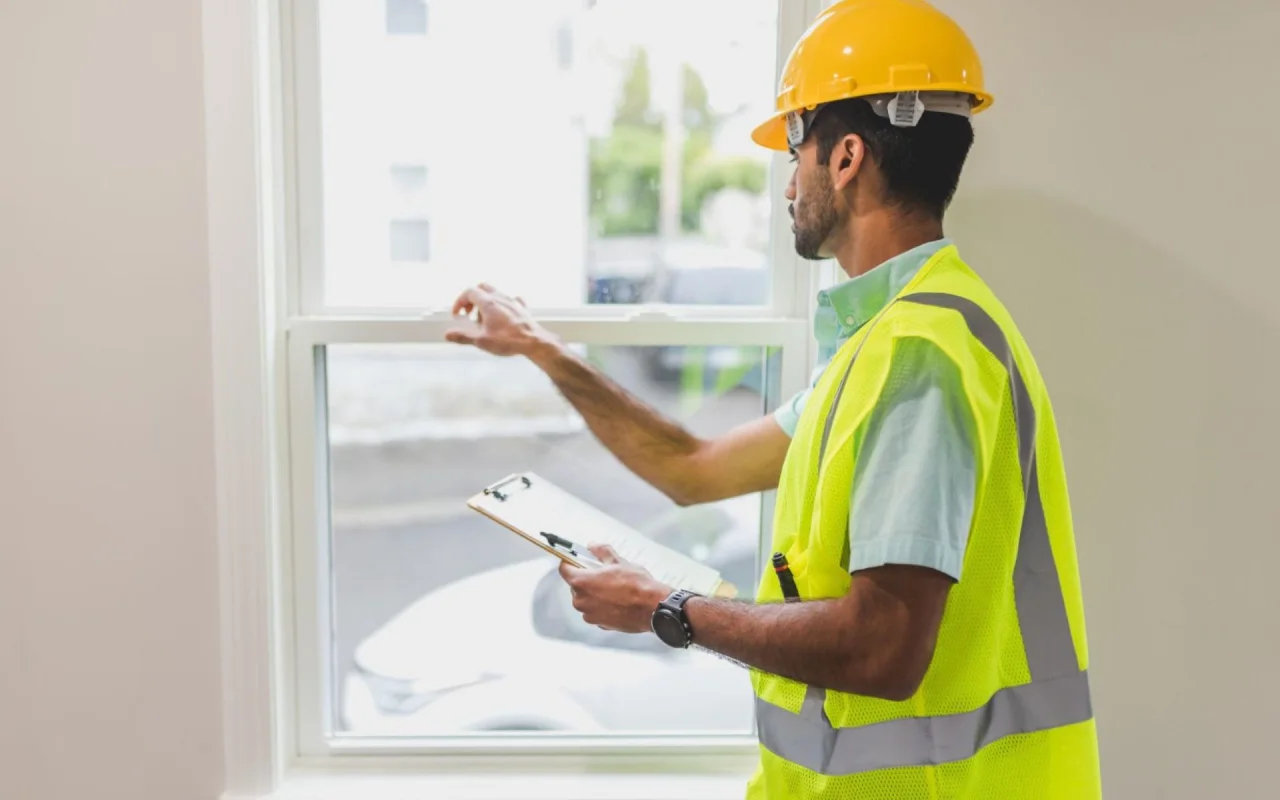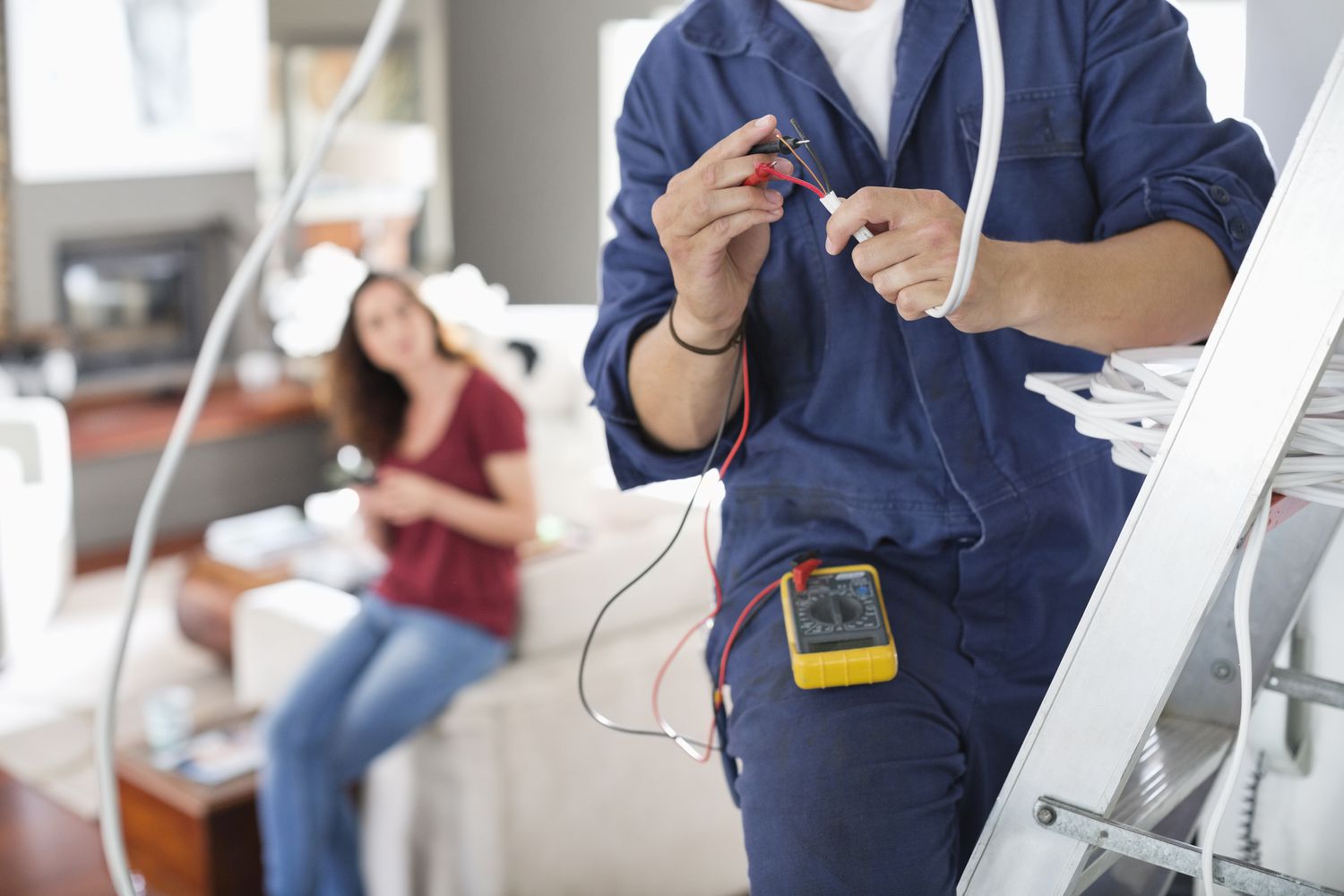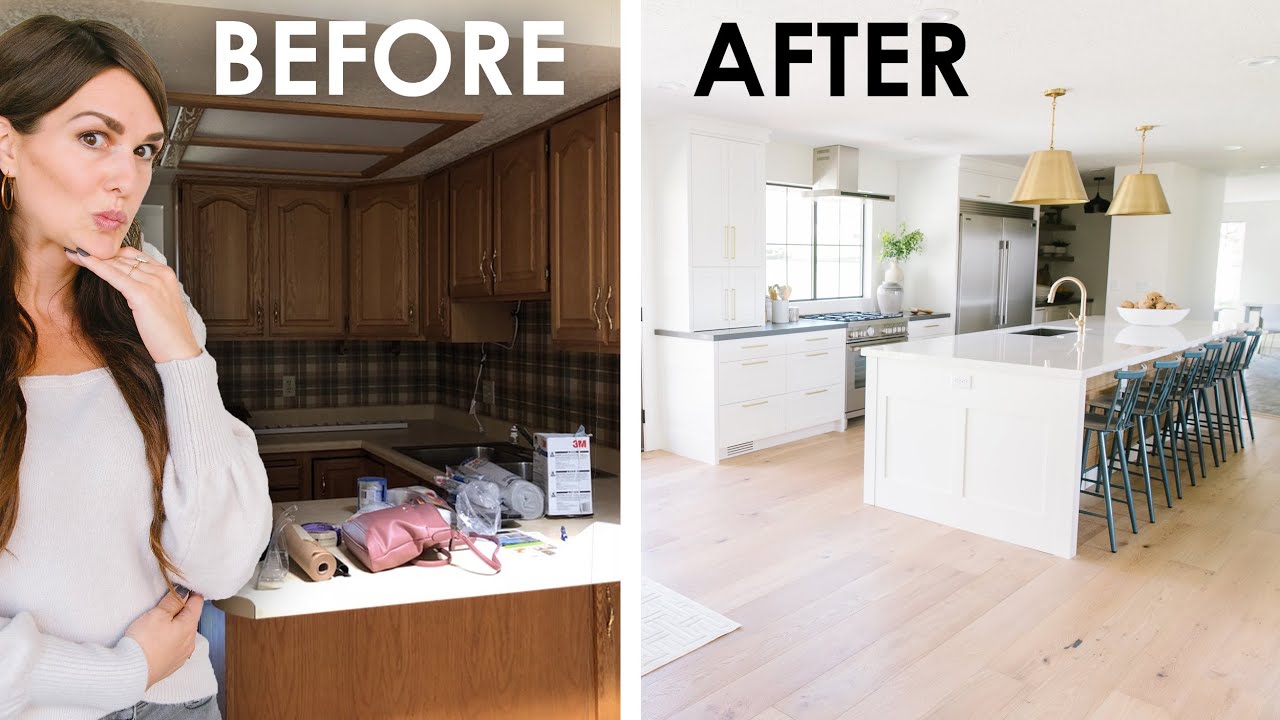Home>Home Maintenance>When To Walk Away After A Home Inspection


Home Maintenance
When To Walk Away After A Home Inspection
Modified: August 17, 2024
Unsure about the condition of your potential new home? Discover when it's wise to walk away after a thorough home inspection. Get expert guidance on home maintenance.
(Many of the links in this article redirect to a specific reviewed product. Your purchase of these products through affiliate links helps to generate commission for Storables.com, at no extra cost. Learn more)
Introduction
Welcome to the world of home inspections! Whether you’re a first-time homebuyer or a seasoned homeowner, the process of buying or selling a house can be an overwhelming experience. One of the key factors in this process is the home inspection. This comprehensive examination of a property helps identify any existing or potential issues that may impact its value or safety.
Undertaking a home inspection is crucial because it provides buyers with valuable insight into the condition of the property, allowing them to make informed decisions. Similarly, sellers can also benefit from a pre-listing inspection, as it allows them to address issues upfront and potentially increase the market value of their home.
During a home inspection, a qualified professional will meticulously evaluate various aspects of the property, including the structural integrity, electrical systems, plumbing, roof, HVAC, and more. Their objective is to identify any signs of major issues that could be costly to repair or compromise the safety of the occupants.
In this article, we will explore the importance of a home inspection, what happens during the inspection process, and how to interpret the findings. We’ll also discuss scenarios where it might be necessary to consider walking away from a purchase, as well as steps to take if you find yourself faced with significant issues.
So, whether you’re a buyer looking to protect your investment or a seller aiming to ensure a smooth transaction, let’s delve into the world of home inspections and learn when to walk away after a home inspection.
Key Takeaways:
- Home inspections are crucial for buyers and sellers to uncover hidden issues, ensure safety, and negotiate repairs or price reductions. Understanding major and minor issues is essential for informed decision-making.
- If a home inspection reveals significant problems, buyers can negotiate repairs or consider walking away. Understanding contractual rights and seeking professional advice are vital for a successful home-buying process.
Importance of a Home Inspection
A home inspection is an essential part of the home buying process for several reasons. First and foremost, it provides potential buyers with a thorough assessment of the property’s condition, helping them make an informed decision. Here are a few key reasons why a home inspection is important:
- Identifying Hidden Issues: Even though a house may appear visually appealing, there may be underlying issues that are not immediately evident. A home inspection can reveal hidden problems such as structural issues, electrical or plumbing problems, or even the presence of mold or pests.
- Ensuring Safety: A home inspection includes an evaluation of the property’s safety features, such as the electrical system, heating and cooling systems, and the overall structural integrity. This ensures that the home meets the necessary safety standards and can provide a safe living environment for the occupants.
- Budgeting and Planning: By uncovering any potential issues during a home inspection, buyers can estimate the cost of necessary repairs or replacements. This allows them to budget accordingly and make informed decisions about their future investment.
- Negotiation Power: The findings from a home inspection can also provide buyers with negotiation power. If major issues are discovered, buyers may request repairs or ask for a reduced price to account for the necessary repairs or replacements.
In addition to being important for buyers, sellers can also benefit from a home inspection. By getting a pre-listing inspection, sellers can address any issues before putting their house on the market. This helps them avoid surprises during the negotiation process and increases the likelihood of a smooth transaction.
Ultimately, a home inspection is a crucial step in the real estate process that allows both buyers and sellers to have a clear understanding of the property’s condition. It provides peace of mind, helps avoid future headaches, and ensures that the transaction is fair and transparent.
What Happens During a Home Inspection
During a home inspection, a qualified professional conducts a detailed assessment of the property to identify any potential issues. Here’s what typically happens during a home inspection:
- Exterior Inspection: The inspector starts by examining the exterior of the house, including the roof, gutters, siding, windows, and doors. They look for signs of damage, wear and tear, and any potential issues that may affect the stability or integrity of the structure.
- Interior Inspection: Next, the inspector thoroughly checks the interior of the house, room by room. They inspect the walls, ceilings, floors, doors, and windows for any visible damage or defects. They also examine the electrical outlets, switches, and lighting fixtures to ensure they are functioning properly.
- Plumbing Inspection: The inspector examines the plumbing system, including water supply lines, drains, and fixtures. They check for leaks, proper water pressure, and the functionality of toilets, sinks, showers, and bathtubs.
- Electrical Inspection: The electrical system is a critical component of a home inspection. The inspector assesses the electrical panel, wiring, outlets, and switches for any safety concerns or code violations. They also test the functionality of electrical appliances and fixtures, including smoke detectors.
- Heating, Ventilation, and Air Conditioning (HVAC) Systems: The inspector inspects the HVAC systems, including the furnace, air conditioner, and any other heating or cooling equipment. They check for proper functionality, filter condition, and potential issues that may affect the system’s performance.
- Structural Inspection: The inspector evaluates the overall structural integrity of the house. This includes assessing the foundation, walls, ceilings, and floors for any signs of damage, settlement, or moisture intrusion.
- Attic and Basement Evaluation: The inspector examines the attic and basement, checking for proper insulation, ventilation, and any signs of moisture or water damage. They also evaluate the overall condition of the space, including the presence of pests or mold.
Throughout the inspection, the professional takes detailed notes and may capture photos to document their findings. Once the inspection is complete, they compile a comprehensive report that outlines their observations, including both major and minor issues.
It’s essential for buyers to be present during the inspection process. This allows them to ask questions, gain a better understanding of the property’s condition, and receive direct feedback from the inspector. Buyers can learn valuable maintenance tips and recommendations to ensure the longevity and safety of their new home.
Remember, a home inspection is a non-invasive examination, meaning the inspector does not typically perform destructive tests or tear into walls or floors. Their assessment is based on what is observable and accessible during the time of the inspection.
Signs of Major Issues
During a home inspection, the inspector looks for signs of major issues that could impact the safety, functionality, or value of the property. Here are some common signs that may indicate significant problems:
- Structural Damage: Cracks in the foundation, sagging or uneven floors, bowing walls, or signs of water damage can indicate structural issues that may require extensive repairs.
- Faulty Electrical Systems: Outdated or inadequate electrical panels, exposed wiring, faulty outlets or switches, and incorrectly installed fixtures can pose serious safety hazards and may require a professional electrician’s assessment.
- Plumbing Problems: Leaking pipes, slow drainage, low water pressure, or signs of water damage can indicate plumbing issues that may lead to costly repairs or impact the overall functionality of the system.
- Roofing Concerns: Missing or damaged shingles, signs of water intrusion or leaks, sagging rooflines, or a damaged chimney can indicate roofing problems that may require repairs or even a complete roof replacement.
- Foundation Issues: Cracked or crumbling foundation, uneven settling, or signs of moisture intrusion in the basement or crawl space may indicate significant foundation issues that require immediate attention.
- Mold or Pest Infestations: The presence of mold or signs of a pest infestation, such as droppings, chewed wires, or damage to wood structures, can indicate serious underlying problems that may affect the health and safety of the occupants.
- Unsafe or Inadequate Heating and Cooling Systems: Outdated or malfunctioning HVAC systems, improper ventilation, or an inadequate heating or cooling capacity can lead to discomfort, poor indoor air quality, and increased energy costs.
- Safety Hazards: Obvious safety hazards, such as faulty or non-functional smoke detectors, unsafe stairs or handrails, or issues with fire safety equipment, should be addressed promptly to ensure the well-being of the occupants.
It’s important to note that not all issues identified during a home inspection are considered major. Some may be minor or cosmetic in nature, requiring routine maintenance or simple repairs. However, it’s crucial to address major issues promptly and consider their potential impact on the property’s value and livability.
If the home inspection reveals any major issues, it’s important to consult with professionals to assess the extent of the problem, obtain repair estimates, and seek guidance on potential solutions. This will help you make an informed decision on whether to proceed with the purchase or consider other options.
Minor Issues vs. Major Issues
During a home inspection, the inspector will identify both minor and major issues within the property. Understanding the difference between these types of issues is crucial in determining their significance and the necessary steps for resolution.
Minor Issues:
Minor issues are typically cosmetic or require simple repairs that are relatively low in cost and can be easily addressed. These issues do not pose a significant risk to the safety, functionality, or value of the property. Examples of minor issues may include:
- Cracked tiles or minor grout issues in the bathroom or kitchen
- Loose doorknobs or cabinet handles
- Dripping faucets or minor plumbing leaks
- Minor wall or ceiling cracks due to normal settling
- Trim or molding that needs repainting or reattaching
While these issues are not major concerns, it’s still important to address them to prevent further deterioration and maintain the overall appearance and condition of the property. Sellers may choose to fix these minor issues before listing the property, while buyers can negotiate for repairs or consider addressing them after the purchase.
Major Issues:
Major issues are those that can significantly affect the safety, functionality, or value of the property. These issues often require professional intervention and may involve substantial costs to repair or replace. Examples of major issues may include:
- Structural damage, such as foundation issues or significant settlement
- Severe water damage or mold contamination
- Outdated or unsafe electrical systems
- Roofing problems that require repair or replacement
- Plumbing issues that result in leaks, blockages, or poor water pressure
- Significant HVAC system malfunctions or inefficiency
When major issues are discovered during a home inspection, it’s important to consult with professionals, such as contractors or specialists, to evaluate the extent of the problem and provide repair estimates. Depending on the severity, buyers may negotiate repairs or request a reduction in the purchase price to account for the necessary repairs.
Ultimately, the importance of addressing major issues lies in ensuring the safety, functionality, and livability of the property. While major issues may seem daunting, they can often be mitigated through proper repairs and maintenance, allowing buyers to proceed with the purchase confidently and sellers to rectify potential problems before listing their property on the market.
If the home inspection reveals major structural issues or costly repairs, it may be best to walk away. It’s important to weigh the potential expenses and decide if the property is worth the investment.
Read more: When Can You Walk On Driveway After Sealing
When to Consider Walking Away
While buying a home is an exciting venture, there are situations where it may be necessary to consider walking away from a purchase after a home inspection. Here are a few scenarios that warrant careful consideration:
- Significant Structural Issues: If the inspection reveals major structural issues, such as foundation problems or extensive water damage, it may be a red flag indicating significant and potentially costly repairs. In such cases, it’s important to assess whether the repair costs and potential long-term consequences outweigh the benefits of purchasing the property.
- Extensive Hidden Damage: If the inspection uncovers hidden damage that was not disclosed by the seller, such as hidden mold, pest infestations, or undisclosed water damage, it may raise concerns about the overall condition and maintenance of the home. In these cases, it’s crucial to evaluate the scope and cost of repairs, as well as the implications for the property’s value.
- Safety Hazards: If the inspection reveals serious safety hazards, such as faulty wiring, significant plumbing leaks, or structural issues that compromise the stability of the property, it’s essential to seriously consider whether it’s worth the risk to proceed with the purchase. Safety should always be a top priority.
- Unrealistic Repair Costs: If the estimated repair costs far exceed your budget or expectations, it may not be financially feasible to move forward with the purchase. It’s important to carefully consider the financial implications and weigh them against the value of the property.
- Unresponsive or Unwilling Sellers: If the sellers are unresponsive or unwilling to address significant issues uncovered during the home inspection, it could indicate a lack of cooperation or willingness to negotiate. In such cases, it may be prudent to reconsider your options and explore other properties.
Walking away from a purchase decision is never an easy choice, but it’s important to prioritize your long-term satisfaction and financial well-being. Before making a final decision, consult with professionals, such as real estate agents or legal advisors, to understand the potential ramifications and explore any available alternatives.
Remember, a home inspection serves as a valuable tool to uncover any hidden issues and ensure a smooth and informed home buying process. If the inspection reveals significant concerns that cannot be adequately addressed or are beyond your comfort level, it may be wise to consider walking away and continue your search for a property that better meets your needs and expectations.
Consulting with Professionals
When faced with major issues or uncertainty after a home inspection, it’s important to consult with professionals who can provide expert guidance and advice. Here are some professionals you may consider reaching out to:
- Real Estate Agent: Your real estate agent can be a valuable resource during the post-inspection phase. They can help you interpret the inspection report, guide you through the negotiation process, and provide insights into the local housing market. Their experience and expertise can help you make informed decisions and navigate complex situations.
- Home Inspector: If you have questions or need further clarification about the inspection report, don’t hesitate to reach out to the home inspector. They can provide additional information about their findings, offer recommendations for further evaluations, and help you understand the severity and potential costs associated with any identified issues.
- Contractors and Specialists: Depending on the nature of the problems uncovered during the inspection, you may need to consult with specialized contractors or professionals. For example, if there are electrical or plumbing issues, you may want to get quotes or assessments from licensed electricians or plumbers. If there are structural concerns, a structural engineer may be needed to assess the severity of the problem and propose appropriate solutions.
- Real Estate Attorney: In complex situations or if legal advice is needed, it can be wise to consult with a real estate attorney. They can review the contract, help you understand your rights and obligations, and provide guidance on potential legal issues that may arise during the transaction.
- Financial Advisor: If the estimated repair costs or potential risks associated with the property are a concern, consulting with a financial advisor can be beneficial. They can help assess the financial impact, analyze your budget, and provide guidance on whether the purchase aligns with your long-term financial goals.
Engaging with these professionals will provide you with a well-rounded perspective and the information needed to make an informed decision. They can offer guidance tailored to your specific situation, ensuring that your interests are protected throughout the buying process.
Remember, the expertise and guidance of professionals can help mitigate risks, provide alternative solutions, and ensure that you have all the necessary information to make the best decision for your needs and circumstances.
Negotiating Repairs or Price Reductions
After a home inspection reveals significant issues, buyers have the option to negotiate repairs or request a price reduction. Here are some steps to consider when navigating this negotiation process:
- Review the Inspection Report: Carefully review the inspection report and understand the extent and severity of the issues identified. Identify the major concerns that need to be addressed or repaired.
- Prioritize the Issues: Determine which issues are of the highest priority or pose the greatest potential risk or cost. Focus on these issues during the negotiation process.
- Get Repair Estimates: If you are considering requesting repairs, obtain repair estimates from qualified contractors or specialists. This will help you understand the potential costs involved and provide evidence to support your negotiation requests.
- Communicate with the Seller: Open a dialogue with the seller or their representative to discuss the inspection findings. Clearly communicate your concerns and desired outcomes, whether it’s repairs or a price reduction.
- Negotiate Solutions: Propose potential solutions, such as specific repairs or a reduction in the purchase price to account for the necessary repairs. Find a middle ground that benefits both parties and encourages a successful resolution.
- Be Realistic: Keep in mind that not all sellers will agree to make repairs or reduce the price. It’s important to be realistic and flexible during negotiations. Consider the overall value of the property, the local market conditions, and your own budget constraints.
- Consider Seller Disclosures: Review any seller disclosures provided before making your negotiation requests. If the seller had already disclosed certain issues, it may be difficult to negotiate repairs or price reductions for those specific items.
- Get Everything in Writing: Once an agreement is reached, make sure to document everything in writing. This includes any agreed-upon repairs, timelines, or changes in the purchase price. Having a written agreement protects both parties and ensures clarity moving forward.
Remember, negotiation is a collaborative process aimed at finding a mutually beneficial resolution. Approach the negotiations with a solution-oriented mindset, focusing on addressing the most critical issues while maintaining a respectful and open line of communication with the seller.
If an agreement cannot be reached, and the issues are too significant or beyond your comfort level, it may be necessary to walk away from the purchase and continue your search for a home that better meets your needs and expectations.
Understanding Your Rights and Contractual Obligations
When navigating the post-inspection phase of a home purchase, it’s essential to have a clear understanding of your rights and contractual obligations. Here are some key points to consider:
- Review the Purchase Agreement: Carefully review the purchase agreement you have with the seller. Understand the provisions and contingencies outlined in the contract, including any clauses related to the home inspection and potential remedies for identified issues.
- Request for Repairs: If the inspection reveals significant issues, contact the seller or their representative to formally request repairs or remedies as allowed by the purchase agreement. Ensure your request is made within the timeframe specified in the contract.
- Consult with Professionals: When assessing your options, it’s advisable to consult with professionals such as real estate agents or attorneys who can provide guidance based on local laws and regulations. They can help you understand your rights and obligations and provide advice on the best course of action.
- Negotiation: Engage in open and honest negotiations with the seller or their representative. Clearly communicate your concerns and desired outcomes, whether it’s repairs, a price reduction, or other agreed-upon solutions.
- Document Everything: Keep a record of all communication, including emails, written requests, and any agreements reached during the negotiation process. This documentation serves as evidence and protection in case of disputes or misunderstandings.
- Consult an Attorney, if Necessary: In complex situations or if legal advice is required, consult with a real estate attorney who can help you understand your rights and obligations and ensure you are protected throughout the process.
- Walk Away, if Necessary: If an agreement cannot be reached or if the issues are beyond your comfort level or financial means, you may need to exercise your right to terminate the purchase agreement. Be aware of any deadlines or contingencies related to this decision and follow the proper procedures outlined in the contract.
Understanding your rights and contractual obligations is vital to protect yourself throughout the home buying process. By familiarizing yourself with the terms of the purchase agreement and seeking professional advice, you can make informed decisions and ensure that your interests are safeguarded.
Remember, each situation is unique, and the specific terms of your contract and local laws may influence your options and obligations. Stay informed, ask questions, and seek the guidance of professionals to fully understand and navigate this important aspect of the home buying process.
Read more: When To Walk On New Grass
Conclusion
A home inspection is a crucial step in the home-buying process that provides valuable insights into the condition of a property. It helps buyers make informed decisions and ensures that sellers are aware of any potential issues upfront. Understanding how to navigate the post-inspection phase is key to a successful transaction.
Throughout this article, we have explored the importance of a home inspection and what happens during the inspection process. We discussed the signs of major issues and the difference between minor and major issues. We also delved into when it may be necessary to consider walking away from a purchase and emphasized the importance of consulting with professionals during this phase.
When faced with significant issues, buyers have the option to negotiate repairs or request a price reduction. It’s crucial to prioritize the most critical issues and obtain repair estimates to support your negotiation requests. Clear communication with the seller and documentation of any agreements reached are equally important.
Understanding your rights and contractual obligations is paramount. Reviewing the purchase agreement, consulting with professionals, and being aware of the timelines and contingencies outlined in the contract will help you navigate this phase with confidence. If necessary, consult with a real estate attorney to ensure legal compliance and protection.
In conclusion, a home inspection is an essential part of the home-buying process, allowing buyers to make informed decisions and sellers to address potential issues proactively. By understanding the inspection findings, negotiating effectively, and being aware of your rights and obligations, you can navigate the post-inspection phase successfully and move forward with confidence in your real estate transaction.
Remember, every situation is unique, and it’s important to seek individualized advice based on your specific circumstances. With the guidance of professionals, you can make informed decisions and ensure a smooth and satisfactory home purchase experience.
Frequently Asked Questions about When To Walk Away After A Home Inspection
Was this page helpful?
At Storables.com, we guarantee accurate and reliable information. Our content, validated by Expert Board Contributors, is crafted following stringent Editorial Policies. We're committed to providing you with well-researched, expert-backed insights for all your informational needs.














0 thoughts on “When To Walk Away After A Home Inspection”